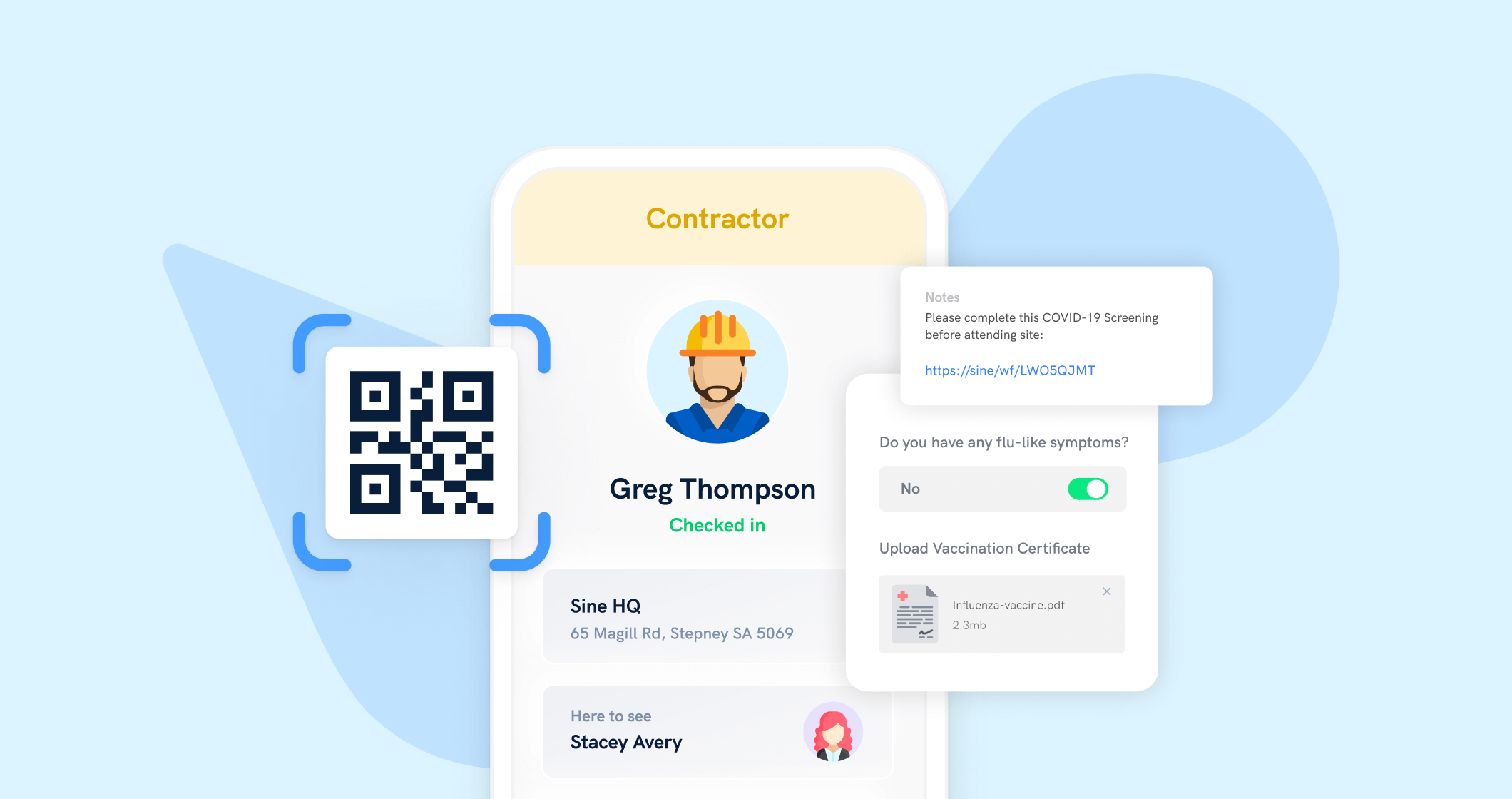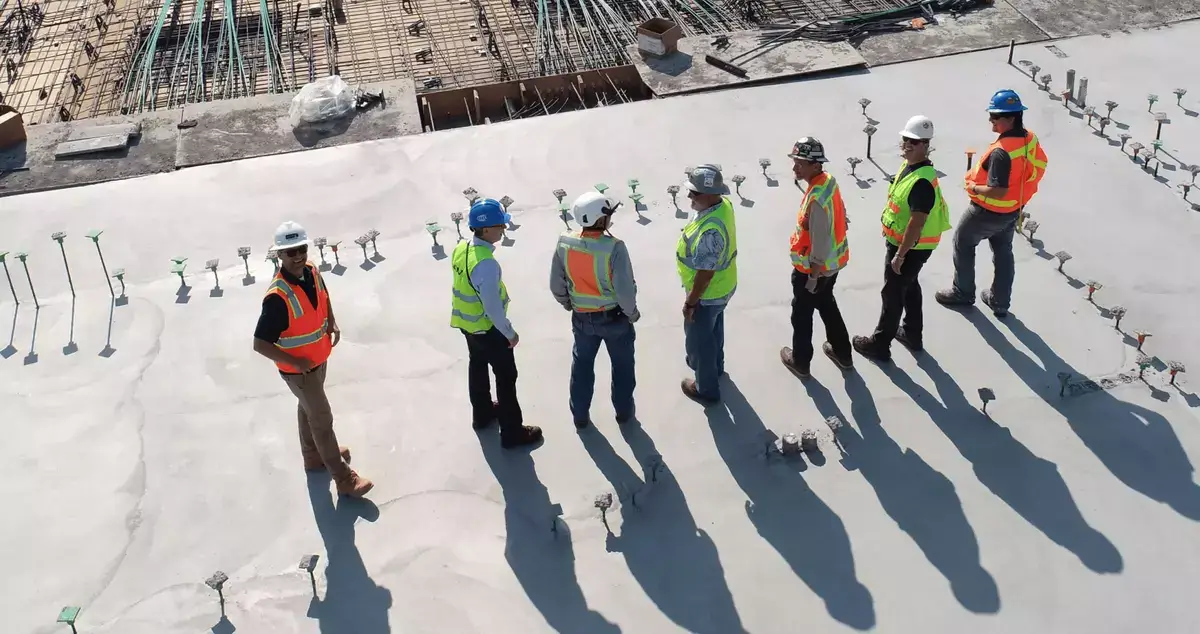Managing contract workers on a job site requires preparation. This is especially true for organizations working on new construction, whether it's an office renovation or a new building site. Keeping track of extended staff means taking into account safety and liability issues.
When you set up your contractor management system to process new workers, it's important to know who they are, who they work for, and their responsibilities. In construction, that means understanding the key differences between general contractors and construction managers.
When an organization hires a general contractor (GC), this means they have already finalized their project design and need someone to organize the labor. Business owners typically send out project specifications, and general contractors submit bids for the project. Their bids should cover the GC's own staff and supply budget, materials, and any procurement services they'll need to use. Jobs don't necessarily go to the lowest bidder but rather the most reasonably-priced bid considering the amount of work that needs to be done.
While on-site, the general contractor answers to the organization's owner or manager. However, a GC hires their subcontractors to carry out the labor, who are responsible for managing that staff. They're also responsible for abiding by the original bid price since they're technically paid in a lump sum that should cover their costs and secure a profit.
When GCs go over budget, the extra money typically comes out of the GC's sum and decreases their overall profit. While this may keep them from going over budget, they have an incentive to cut their own costs to secure a profit.

A construction manager differs from a general contractor in that they are involved in construction projects from the very beginning. As temporary, extended members of a company's staff, they often assist in the design process and advise organizations about the costs and practicality of different building features. Their work is done in the pre-construction phase.
Construction managers are paid a fixed fee to help draw up plans and collaborate on how to get the project completed. This relationship is collaborative in nature, and the construction manager's fee is separate from the physical construction budget.
A construction manager's work is not done after the project is defined. The budget they help build is then used to hire subcontractors to perform the labor - and this may include a general contractor. However, there is more leeway with a construction manager. They can hire multiple subcontractors for different aspects of the project and act as the supervisor on the scene in the same way a general contractor would.
As construction proceeds, construction managers abide by the original budget as much as possible, but their fee is still essentially the same. They can even step back and reexamine parts of the project with the organization if plans change or problems emerge.
When it comes to construction, it's essential to know how the hierarchy and its communication system work, even for companies that hire a construction manager to handle the project. This helps you keep your worksites transparent and safe.
Understanding construction company hierarchy can also help avoid contract disputes, with can be lengthy, expensive, and hold up construction projects. In 2019 in North America, the average length of construction disputes was 17.6 months, and the average cost was $18.8 million. These disputes were most commonly caused by a contractor or subcontractor “failing to understand and/or comply” with a contractual obligation.
Whether hiring a construction manager or a general contractor, it's crucial that organizations be very clear regarding safety and liability and establish strict safety rules and guidelines for workers on their property. Around 20% of worker fatalities happened in the construction industry in 2018 and 2019. Falls, inadequate protective equipment, and a lack of safety warnings were at the top of the list of OSHA citations in 2021 in construction, meaning organizations need a system they can trust to protect workers, including subcontractors.
If your organization hires a construction manager, they typically act as a consultant, and the contractors and subcontractors they oversee may not have their own high-risk insurance coverage.
But when you hire a general contractor, the lump sum payment they receive generally covers insurance costs for their own employees and subcontractors. In any case, you will want an explicit statement detailing who is liable for any illnesses, injuries, or exposures construction workers may suffer on your property.

Organizations want to keep everyone on site as safe and healthy as possible, so it's often advisable to require any person on your property (regardless of who employs them) to check in via a contractor management system. With Sine, you can:
In other words, a contractor management system is a great tool for meeting and exceeding your safety compliance needs.
In 2019, before the pandemic, the US construction industry was worth $1.3 trillion. While the industry saw a decrease in business from 2020-2021, as of June 2022, construction spending was estimated at a seasonally adjusted annual rate of $1,762.3 billion. As the industry continues to grow, it's crucial for organizations to build a culture of safety for everyone on their property. Whether you're managing construction projects or hiring someone else to oversee the process, using a contractor management system, such as Sine, can help you increase compliance and reduce risk.
This blog post is part of a two-part series based on the webinar 'Achieving compliance safety, security in commercial real estate'. In this first instalment, we explore how organisations can utilise visitor and contractor management systems and some of their features to help enhance compliance without compromising on convenience.
Be sure to check out our recent webinar, led by Matt Hawken and Laura Chapman.
As the world continues to move into the digital age and business systems and operations increase in complexity, the burden of maintaining compliance is ever-increasing. Therefore, it is important for businesses to make compliance management one of the most vital aspect of their organisation:
Digital visitor and contractor management platforms like Sine can serve as a powerful tool to automate and digitise compliance in the workplace. Not only does it help speed up previously manual processes, but it can reduce the administrative burden that so many commercial real estate companies experience. Here are some of the features that can help achieve compliance in the workplace:
Utilise this feature to help enable contractors and visitors to acknowledge they have returned keys, file incident reports, complete checklists and view exit instructions, and view exit instructions related to your site. Incident reports are a good way to record the facts around a workplace accident and/or injury, property damage, or security incident. It also helps managers understand the conditions and circumstances that led up to the event so similar incidents can be prevented in the future. Furthermore, inspection checklists are a useful tool to that can help determine if companies are meeting their compliance requirements. These can be requirements dictated by both internal and external stakeholders or regulatory bodies.
The ability to generate reports in real-time over a specific period can give managers and compliance officers insightful data on building traffic and visitors. Utilising this data can help alter entrance policies and monitor other trends that need to be addressed to achieve a safer and more compliant workplace.
Integrations are supported applications or services that work with your existing visitor management, helping to achieve compliance in the workplace no matter their purpose. Whether it be access control, contractor management, or Wi-Fi provisioning integrations, they can play a vital role in helping achieve compliance, safety, and security in commercial real estate. Read more about the power and uses of Sine integrations.
This is just a small insight into how Sine can help companies enhance compliance without compromising on convenience. Find out more by booking a demo with our friendly team today!
The number of people operating as contractors is skyrocketing, and more companies are contracting out jobs to outside entities when they require part-time expertise or need to keep down salary costs. Contractors (and subcontractors) have long been part of the construction industry, and businesses can learn a lot from how construction companies have managed their on-site contractors in the past.
When companies invite contractors onto their job sites, questions of liability, compliance, and safety arise - just to name a few. Below, we'll look at what factors you need to consider and the kinds of tools you might need to help your company manage contractors on-site effectively.

It's easy to assume that contractors play by their own set of rules and are simply temporary members of your job site. But in reality, contractor tracking may be required to ensure that these guests are fully informed and monitored.
Here are just some of the things a contractor tracking system can do to help companies manage contractors on site:
Worksite compliance applies to everyone on site, so managers must ensure that their contractors don't pose liability issues or create an unsafe workplace for other employees. Luckily, there are tools that help organize these tasks.
Introducing new or temporary staff to a workplace typically requires an induction procedure. This often includes:
If your company manages multiple contractors, it can be challenging to handle induction using paper methods. That's why a visitor management system (VMS) such as Sine's allows site managers to automate much of this work.
A VMS can automate many facets of contractor management to ensure contractors are prepared for and monitored on a worksite. These systems also help contractors move smoothly through a site to maximize their work time.
In addition to induction protocols, VMS software can also be equipped to:
If your company hires and manages independent contractors, you'll likely want to employ a system that can record and securely store information gathered during contractor visits. That way, you can track any incidents and generate reports that help you maintain compliance and find room for improvement in the future.
Whether you manage multiple contractors at once or change contractors intermittently, it's crucial to look back and assess the success of your contractor tracking system. This is why Sine offers tools to aid in contractor reviews, such as Workflows that aid in real-time workforce compliance.
When a company outsources some of its work to contract workers or subcontractors, contractor management software can help companies ensure the integrity of the work site as well as the completion of financial and insurance documents, safety training, and other compliance procedures. By automating these tasks using a visitor management system, organizations can manage contractors with maximum efficiency without interrupting the flow of a regular work day.